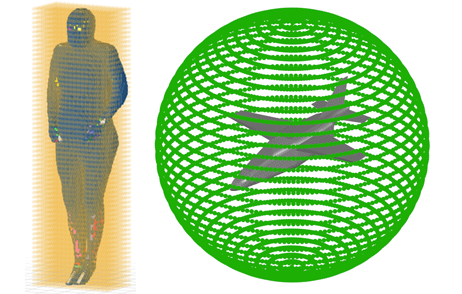Modeling
Metallic Surfaces and Thin Dielectrics
Thin surface materials can be modeled as PEC, lossy materials and thin dielectrics.
Lossy materials are modeled based on the following approaches:
- Standard Model – allows to account for the limited conductivity of the thin surface materials with or without consideration of the skin effect
- Double Layer Currents and Nullfield Models – more accurate models that allow to account for the limited conductivity of the thin surface materials by considering fields on both sides of the surface. In both models surface current is composed of two sub-currents flowing on opposite sides
- Double Layer Currents – is applied to open or closed surfaces, for which both sub-currents radiate to the same region
- Nullfield – in this model each sub-current radiates only to internal or external region of the closed surface, or to the corresponding half-space from the open surface. In case of the closed region care should be taken with orientation of the mesh triangles, normal vectors of all triangles must be directed outside of the region (in external medium)
Bulk Dielectric Objects
Bulk dielectric objects are modeled as mixed metallic and dielectric geometries, such as closed dielectric bodies (both ideal and lossy) along with metal/wire geometry, planar structures, consisting of dielectric substrate with metallic traces by using Surface Integral approach (SIE).
Volume Integral Equation (VIE) approach is used for modeling of homogeneous and non-homogeneous dielectric objects represented as voxel-based models.
Cable Structures (Wires and Hybrid Cables)
Wires are used for definition of electrical properties (cores conductivity, insulation coating or dielectric substrate) for rod structures in fullwave MoM simulation.
Hybrid cables are used for analysis of single cables, cable bundles, twisted pairs, ribbon and shielded cables (coaxial, complex shielded) in Hybrid MoM/MTL simulations.
Device Models
- Lumped Loads
- RLC in Series
- RLC in Parallel
- Distributed
- Network Parameters
- Circuit/Schematic Devices
- Netlist Devices
- Touchstone Devices
- IBIS Devices

Ports, Sources and External Excitations
- S-Matrix Calculation Ports
- Voltage Sources
- Plane Waves
- Electric/Magnetic Dipoles
- Impressed Currents
- Near Field Sources
- Radiation Patterns
- Grid Sources

Observations / Data Probes
- Voltage and Current Observation Probes
- Schematic Probes
- Near Field Observation Probes
- Near Field Areas
- Near Field Grids
- Near Field Volumes
- Far Field Observation Region
- Cylindrical Scan
- Radar Cross Section


